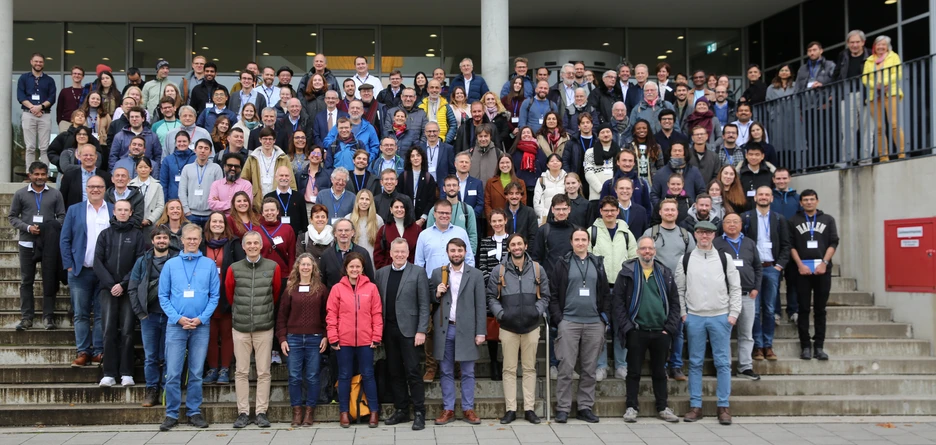Exploring the Architecture and Motions of Biomolecules in Action
News |
This central topic guided the international symposium “Ultra-Highfield NMR and 4D Structural Biology – From Mechanisms to Therapies”, on November 6-7, 2025, hosted by the Bavarian NMR Center (BNMRZ), a joint research infrastructure of Helmholtz Munich and the Technical University of Munich (TUM). The organizers are members of the TUM-IAS Focus Group “In-cell 19F NMR of Protein Interactions”, reflecting the strong interdisciplinary ties and the high relevance of this cutting-edge research topic. (TUM-IAS Fellow Angela M. Gronenborn, University of Pittsburgh, Michael Sattler, and Franz Hagn, both Professors at TUM)
Bringing together more than 150 participants and world-leading experts, the symposium explored how adding time as a fourth dimension in structural biology can facilitate novel discoveries. Understanding motions – a fundamental property needed for biomolecular function - is essential for describing how cells and organisms work and for developing novel and advanced therapeutic strategies.
By integrating ultra-high-field NMR with complementary structural and spectroscopic techniques such as cryo-electron microscopy and tomography (cryo-EM/ET), fluorescence methods, as well as computational modeling and machine learning, researchers are now able to visualize the motions of biomolecules on multiple time scales, helping to elucidate the beautiful choreography of life.
The event included inspiring lectures from more than 25 internationally recognized scientists and fostered vibrant discussions on the future of dynamic structural biology. The organizers are members of the TUM-IAS Focus Group “In-cell 19F NMR of Protein Interactions”, reflecting the strong interdisciplinary ties and the high relevance of this cutting-edge research topic.
